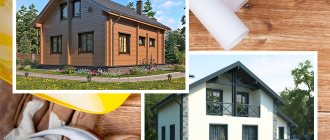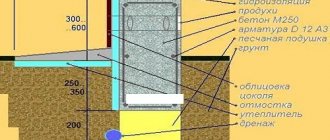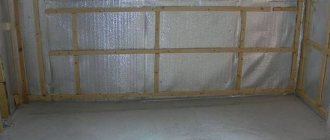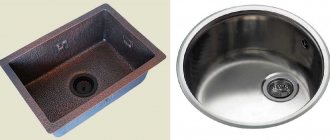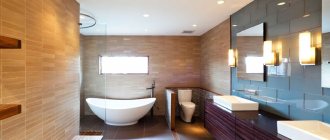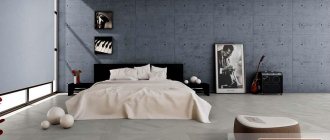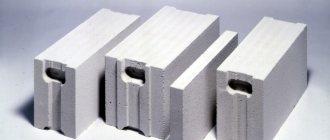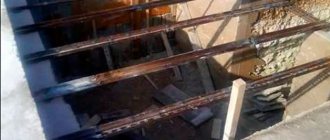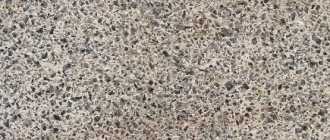Differences between plinth and baguette
When considering construction materials, you may come across such concepts as baguette and plinth. For a simple home craftsman, it is important to know what a baguette looks like and what the difference is between the products.
In general, a baguette and a plinth are one and the same element of the interior; the main difference is the width of the product and the presence of a relief pattern. The width of the baguette can be more than 5 cm; gypsum, wood and polystyrene are used to make it. The front side of the baguette has a relief pattern and ovals. For the manufacture of plinths, in most cases, foam plastic is used; its width does not exceed 5 cm, the front surface of the plinth is smooth without patterns.
Types of baguettes for the ceiling
Models of ceiling moldings presented on the modern market have different sizes, surface textures and colors. This can be a product of a laconic form or with carved molding. In addition, various materials can be used for their manufacture, including flexible baguette.
In most cases, the baguette is tightly glued to the ceiling and wall, however, when using LED lighting, the product is fixed only on the wall with a small distance from the ceiling.
The color scheme depends on the preferences of the owner; the baguette can be chosen to match the ceiling, as well as to match the walls or wallpaper. In addition, finishing can be used to differentiate walls and ceilings. In any case, the end result should be a harmonious interior.
Gypsum baguettes
are characterized by high resistance to moisture, but they are not recommended to be painted. Fastening of gypsum products is done using alabaster.
Wooden baguettes
– these are durable and environmentally friendly products, the use of which gives the interior a rather rich look. Wood can be painted, but protected from moisture. To attach wooden baguettes, special adhesives are purchased, but they can be fixed using nails or self-tapping screws, covering the caps with putty.
Polyurethane ceiling molding
glued using silicone sealant, and they are glued before finishing the walls and ceiling. Such elements can mask minor surface defects. Polyurethane is resistant to high humidity and temperature changes. Polyurethane baguettes are great for decoration with LED lighting. The cost of this material is slightly higher than other types, but it has an elegant appearance.
Foam baguettes
can be called an ideal option for surfaces with significant defects. However, existing large cracks should first be covered with putty. The advantages of polystyrene foam include good moisture resistance, light weight, decent appearance and low cost. Foam moldings can be painted, which allows them to be used in any design plans. Fastening foam products is done using putty or special glue.
Plastic baguettes
suitable for the design of oval and curved structures, as they have good flexibility. In addition, the products are lightweight, resistant to high humidity and are not very expensive. When installing a flexible molding for the ceiling, it is necessary to use metal or wooden slats on which the moldings are fixed with self-tapping screws.
Which moldings for walls are best to choose: advice from builders
Ceiling baguettes are conventionally divided into 2 categories – fastening and decorative. The first option, also called hidden, has a greater degree of strength and flexibility. The hand-fixed surface supports all types of shaped designs. The decorative type is best done when you simply need to securely fix the suspended ceiling to the ceiling or wall.
Regardless of the chosen type of product, you need to know the basic characteristics of the materials used to create them.
PVC or plastic - such a stretch ceiling includes a profile, the grooves of which are used to fix the structure. The plastic baguette is made in a white version, but it is always possible to order it to match the main canvas. The material has proven itself well when installing MDF, suspended ceilings and walls. Low cost, lightness, resistance to rot and UV radiation are the advantages of such a ceiling.
In addition to plastic, other materials are used in production:
- Gypsum - found in very old houses. It is characterized by increased fragility. Its use in renovation is appropriate when the stylistic emphasis is shifted to antiquity.
- Polyurethane - unlike polystyrene foam, is the most popular material. It is characterized by increased flexibility, making the baguette easy to install even on a curved surface. It can be installed not only in corners, on the ceiling or walls. The design also allows for the installation of artificial lighting.
- Wood - this type is appropriate in a classic interior. Complemented with plastic panels of the appropriate tone, lining, wall panels. It is painted to match the walls and ceiling.
Polystyrene foam is the cheapest and least popular option. Suitable for budget interiors. Looks good in a room with suspended plasterboard ceilings. A correctly installed foam molding hides visible defects.
Preparation for gluing baguettes
Before you start gluing a ceiling molding or plinth, you need to carry out several preparatory measures:
- First, determine the amount of material that will be required for the work. For this purpose, you should measure the perimeter of the room. Baguettes can have different sizes; to decorate a large room, it is recommended to use long products, and in small rooms it is better to stick shorter baguettes. In any case, the material is purchased with a small reserve in case of an unexpected breakdown or other unpleasant situation. It is possible to glue baguettes with high quality only if you have special tools, in particular we are talking about a pencil, a sharply sharpened knife and a hacksaw. To cut corners correctly, you need to prepare a miter box.
- You can glue the baguette ceiling plinth immediately after leveling the surface with putty or plaster, as well as after painting or finishing with wallpaper. When painting the ceiling and baguette at the same time, the attachment point should be treated with a primer material. In the case of LED lighting, additional markings are made to determine the bottom line for gluing the baguette. To do this, measure the required distance from the ceiling and hammer nails into each corner at this level. Next, a cord or rope is pulled between them, and marks are made on the wall with a pencil.
- For better gluing, it is recommended to cut the baguettes during the work process. The correct cutting angle can be made using a miter box. In this case, no gaps are formed at the joint. If the formation of gaps could not be avoided, then this problem can be solved using putty or a decorative insert. The same element is used to mask the junction of external and internal corners.
Types of ceiling plinths
The main criterion by which the classification of ceiling moldings is carried out is the material of their manufacture. These products can be:
- from foam plastic;
- polystyrene foam;
- semi-urethane;
- from PVC (polyvinyl chloride);
- plaster;
- wooden.
Each of these types has certain technical characteristics and creates different ways to decorate the surface.
Foam ceiling plinth
If you want to carry out repairs at minimal cost, then pay attention to foam products. The material is affordable, can be easily cut to the required size, and comes in various configurations (can imitate stucco). But its main disadvantages are flammability and low strength.
Most often, this plinth is used for finishing suspended structures mounted from plasterboard, as well as various false ceilings. It is installed during the process of starting to putty the room (using the same solution).
Foam ceiling plinth lends itself perfectly to painting
Polystyrene baguette
Polystyrene or extruded polystyrene foam is an analogue of polystyrene foam, only this material is more durable and does not ignite. The cost is slightly higher than polystyrene foam, but belongs to the average price category.
Ceiling plinth made of polystyrene can be used on both plaster and plastic finishes. Expanded polystyrene baguettes are attached to special glue or gypsum mortar (depending on the surface finishing material).
Decorating the premises with polystyrene foam ceiling plinths
Products made of polyurethane
Those who cannot afford expensive plaster molding can replace it with polyurethane (PPU) baguettes. These products are very flexible, capable of taking on various shapes, framing figured ceilings and columns.
Most often, polyurethane ceiling plinth is used to decorate plastic surfaces, as well as PVC lining. It is attached using special glue.
Polyurethane foam products are ideal for decorating semicircular surfaces
PVC ceiling plinth
Plastic products (polyvinyl chloride) for ceiling decoration are most often used along with homogeneous PVC lining. The plastic ceiling plinth not only serves as decoration, but also serves as a profile into which the lining is inserted.
Plastic ceiling plinth, photo
These baguettes are very flexible, and the variety of colors allows you to match them to any type of ceiling decoration. They also contain decorative elements - gilding, holographic inserts.
PVC ceiling plinth with gold edging around the edges and a hologram
Gypsum fillets
Products made from gypsum are traditionally characteristic of the classic style of interior design. Gypsum moldings have been used for room decoration for a long time and today they are used to frame figured moldings, as an artistic element in the overall decorative composition. Ceiling plinths made of gypsum can be of different sizes, have different patterns, and you can paint them yourself. They are attached using putty or alabaster.
Among the advantages of gypsum products are their environmental friendliness, high quality, individuality, and durability. Disadvantages include significant weight, fragility, and high cost.
Exquisite bronzed gypsum ceiling plinth in the interior
Wood products for ceiling decoration
Wooden ceiling also belongs to the classic decorative elements. It is mainly used for framing floors, but for ceilings such a fillet is appropriate only when there are other wooden elements in the room.
Wood in the interior is a sign of aristocracy. This eco-friendly material is strong and durable. Disadvantages of wooden skirting boards: difficulty in processing, susceptibility to rotting, mold, drying out. There may also be bugs in the tree.
Advice: before installing wooden fillets, they should be pre-treated with an antiseptic and coated with a protective varnish. This will extend their service life.
According to the price category, wood products can be divided into two groups: expensive ones made from valuable species (oak, cherry), and an economical option (made from pine, spruce). Wooden ceiling plinths are attached using screws, as well as metal and wooden nails.
A wooden ceiling plinth will be appropriate in a classic design style along with other wood elements
Step-by-step instructions for gluing baguettes yourself
To perform the work faster and more efficiently, you must follow certain instructions.
Gluing a baguette for a polyurethane and foam plastic ceiling is carried out according to the following scheme:
- Work begins at the entrance to the room. The adhesive composition is applied to the edges of the baguette and the joints, then the product is applied to the surface, adhering to the markings made, and pressed tightly. Excess glue is immediately removed with a damp cloth.
- The next design element is first measured, the excess part is cut off and only then glued on. When pressing the baguette to the surface, you should be careful, as strong point pressure causes the formation of dents.
- After gluing all the design elements, the joints are sealed with putty and left until completely dry. After this, the putty is rubbed down with fine sandpaper. The finished design is coated with paint if necessary.
Installation of wooden baguettes
Decorating the ceiling with a wooden ceiling molding is considered a rather labor-intensive process, but this is justified by its luxurious and sophisticated appearance. The work is performed according to the following algorithm:
- The surfaces are leveled.
- Make the appropriate markings.
- Measure the required length of the baguette and cut the elements in the miter box.
- To fix lightweight small baguettes, liquid nails are used. Wide and heavier products are attached using self-tapping screws; for convenience, they can be secured with glue.
- Each baguette is measured in length, the straight edge is cut with a hacksaw, and the corner part is cut in a miter box.
- Places of fastening and joints are covered with putty, wait for it to dry and clean with fine sandpaper.
- In some cases, wooden baguettes are mounted using special corner elements located at a distance of approximately 40 cm. The baguette is directly attached to them.
Elements for decorating a PVC ceiling
In rooms with high humidity, for example, in the bathroom or kitchen, it is recommended to install a plastic ceiling molding. In most cases, such elements are equipped with a special groove for connection to a plastic panel. The panels are used to decorate the ceiling or walls. Plastic is practical, able to retain its original color and does not require special care. To cut polyvinyl chloride baguettes, use a hacksaw.
Installation work involves performing the following actions:
- The frame rail is fixed to the surface at the location of the panel.
- Using self-tapping screws or special staples, secure the baguette, cutting off the edges in the miter box.
- The resulting cracks are sealed with silicone sealant.
Types of ceiling baguettes
Depending on the functions performed, ceiling moldings can be decorative or fastening.
Mounting skirting boards are used when installing suspended ceilings.
Decorative items are used for decoration.
Today, ceiling skirting boards are available in several types, depending on the material:
- wooden;
- aluminum;
- gypsum;
- plastic (polyvinyl chloride);
- expanded polystyrene (foam);
- polyurethane.
Now a little more detail.
Wooden
Until now, despite the availability of baguettes made from modern materials, wooden skirting boards are very popular.
Natural wood has always had many fans.
And today the classic wooden plinth is very popular.
If wood predominates in the interior of the room (plastic panels with a “wood-like” surface, wooden lining, furniture, door or window blocks made of natural wood), then a wooden baguette will come in very handy.
If necessary, it can be painted, which will hide damage to the wood.
Plaster
Today, unfortunately, most people do not remember what a real ceiling molding looks like.
But for several centuries the classic plank was made of plaster!
Visit any old manor or museum out of interest.
There you will see plaster decor in all its glory.
Gypsum is still used on ceilings today, but very rarely.
The fact is that gypsum is a rather heavy and fragile material.
Working with it is difficult and requires a lot of experience for everything to work out perfectly.
Plastic
This material is usually used when constructing ceilings made of plastic panels.
PVC strips are also used when installing suspended ceilings.
It has a special groove in which a harpoon is attached, welded to the ceiling.
The classic plastic baguette is available in white.
However, today manufacturers of PVC ceiling films also offer decorative products that have the same color as the canvas.
Foam plastic (expanded polystyrene)
The most common type of ceiling plinth today.
For two reasons:
- it is very cheap;
- it is very easy to install.
Despite the affordable price, this plank looks quite beautiful on the ceiling.
It is installed if the ceiling is painted, whitewashed or suspended structures made of plasterboard are installed for finishing.
This decorative element allows you to easily hide all the unevenness.
If necessary, the product can be easily painted with water-based paint in any color.
Polyurethane
This is one of the most popular types of ceiling molding.
It is exceptionally flexible and therefore is used on curved surfaces.
The elasticity and light weight of polyurethane strips allow them to be installed not only on walls, but also on the ceiling.
The polyurethane product also differs in width and relief.
If the room has a large area and high ceilings, then, as a rule, a wide plank is used.
This product visually brings the ceiling closer and the room looks more comfortable.
A narrow plinth at a high altitude is almost invisible.
The room will look cold and formal.
Things are completely different in small rooms with standard ceiling heights.
It is the narrow baseboard that looks optimal there.
Selection of adhesive composition
Plastic moldings for ceilings are glued using liquid polypropylene or acrylic nails. When using this composition, there is no need to hold the baguette for adhesion to the surface; fixation is performed instantly.
Very often, putty is used as glue for baguettes, which remains after basic repair work has been completed. In the process of gluing baguettes, the joints of the elements, as well as the gaps between the baguette and the wall, are simultaneously sealed.
Special adhesive compositions allow you to create strong and durable structures, but they cannot be used for foam baguettes.
When using silicone sealant, the baguettes also firmly adhere to the surface, but this adhesive composition cannot be painted.
Installation of baguettes
Installing a baguette on the ceiling depends on its type: some products can only be mounted on putty or alabaster, others can be glued, and others can be mounted on nails or screws.
Installation of foam or polyurethane baguettes
Baguettes made from these materials can be attached with glue, silicone sealant or finishing putty.
The choice depends on your desire and the finishing stage at which installation takes place.
- Before gluing baguettes to the ceiling, evaluate the evenness of the walls . The slightest curvature will lead to gaps remaining between the wall and the baguette, or the baguette itself will follow the shape of the wall. To avoid this, it is better to install skirting boards before finishing the walls - painting or wallpapering. To do this, you should use putty, which will fill all the cracks.
Excess putty is removed with a spatula
- If the walls are already finished, gluing the baguettes to the ceiling is carried out using glue such as Titan, Moment Installation or liquid nails.
Installation of gypsum moldings
Installation of ceiling moldings is carried out on putty or alabaster . The same solution is used to seal joints in corners and straight sections, as well as gaps between the cornice and the wall.
Advice. Massive and heavy plaster moldings can collapse under their own weight. Therefore, after gluing, it is advisable to secure them with white steel screws.
Installation of wooden baguettes
If you have chosen wood products , you can either glue a molding for the ceilings or secure it with nails or self-tapping screws. But in the latter case, there will be holes on the baseboards that will need to be puttied.
Before fastening, you need to drill a hole in the baseboard and make a recess for the screw head
When using self-tapping screws, small triangular wooden mortgages are installed in the corner between the wall and the ceiling, to which the baguettes will subsequently be screwed.
You can learn how to join baguettes in internal and external corners by watching a training video , as well as by studying the relevant materials on our website.
Baguettes for stretch ceilings
Attaching baguettes when decorating suspended ceiling structures is carried out only to the wall. With their help, the junction of the ceiling and wall is masked. Gluing baguettes to a stretched fabric is not allowed, as this may cause damage to the fabric.
A prerequisite for installing baguettes with a suspended ceiling is a perfectly flat working surface. Even the slightest defect becomes obvious in the presence of baguettes.
Innovative materials: aluminum moldings for the ceiling
Durable and easy to install material. There are four types in the construction industry. Invisible separator - used to connect several canvases. The second type is called the universal invisible type, finishing with which is appropriate if necessary to glue the film. The list is completed by the ceiling and wall type, fixed to the ceiling and wall, respectively.
It is extremely rare to make a ceiling using 1 of the types listed above. Creating a perfectly flat surface is possible by combining several types of ceiling moldings.
Once you have figured out the types of material, you can turn your attention to color and size:
- You can join skirting boards with different types of surface relief without restrictions - it’s all a matter of taste;
- It is necessary to abandon such an idea when it comes to a product made of polystyrene;
- Installation of wide types of products is justified in rooms with high ceilings;
- Narrow ceiling moldings need to be fastened when space is limited;
- Ceiling moldings are selected to match the wallpaper and furniture.
The last point causes certain difficulties. For example, the customer does not always prefer a single-color ceiling. Expressed graphic lines will help you get out of this situation. They are created using the contrast between the shade of the baguette and the ceiling. If you want to make your interior unique, you shouldn’t go to extremes. You need to choose colors that combine with each other.
Flexible baguettes
Baguettes with good flexibility are great for round shapes and curves. To give the desired shape to a foam baguette, you can use the following methods:
- Cut the reverse side of the product in several places.
- Cut the whole baguette into several pieces and assemble again.
- Heat the product using a hair dryer and make a bend in the desired place. The product is then cooled in cold water.
- A polyurethane baguette for ceilings can be easily bent without using special tools.
- Wooden baguettes are bent under the influence of steam, the steamed product is bent and fixed in position until it cools completely.
Material price
As mentioned earlier, the cheapest is a foam ceiling molding.
The standard length of the product is 2 meters.
The width and relief can be completely different.
Today, in specialized stores, such products are sold at a price of 50–350 rubles per piece.
Polyurethane baseboards are somewhat more expensive, but they have different dimensions.
Standard length is 2.40 cm.
The cost of one product is 300-2000 rubles.
But its quality is much higher than foam.
Wooden ceiling plinth is surprisingly inexpensive.
Apparently this is due to the huge amount of forest in our country.
Planks made of natural wood are offered at a price of 30–150 rubles per 2 meters, depending on the species.
Advice and recommendations from experts
High-quality ceiling finishing using a polyurethane ceiling molding can be achieved if you follow the recommendations of experienced craftsmen. In particular we are talking about the following:
- Installing a wide baguette visually reduces the height of the room. A similar effect is achieved when installing dark baguettes.
- It is not recommended to install products with three-dimensional relief in small rooms.
- When installing baguettes on high ceilings, you should make a small indentation from the ceiling.
